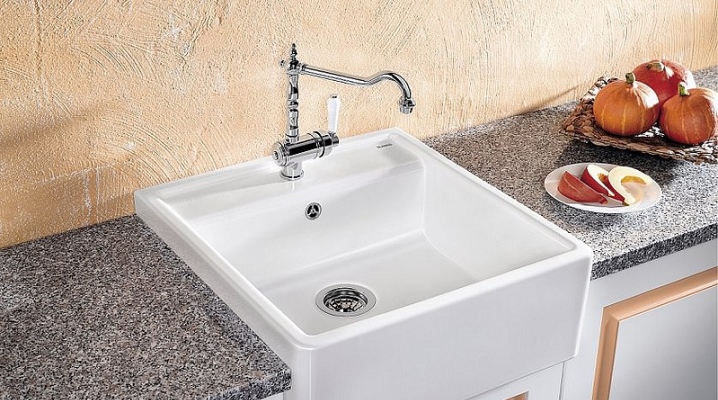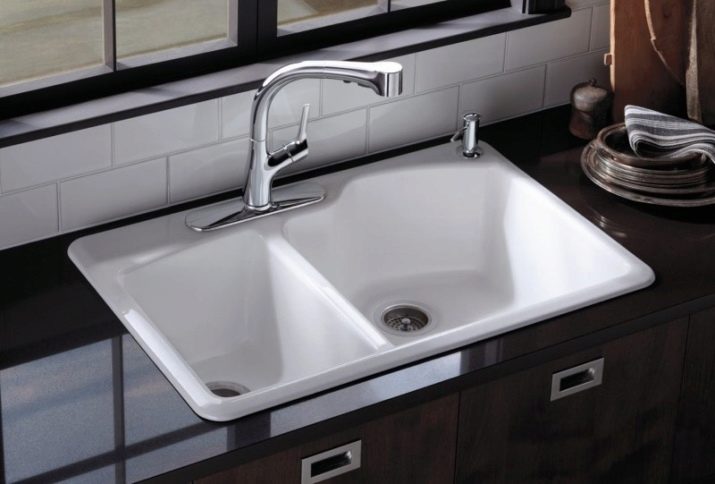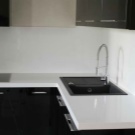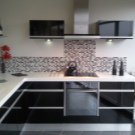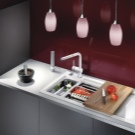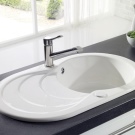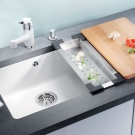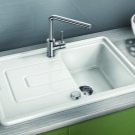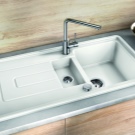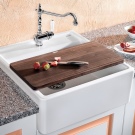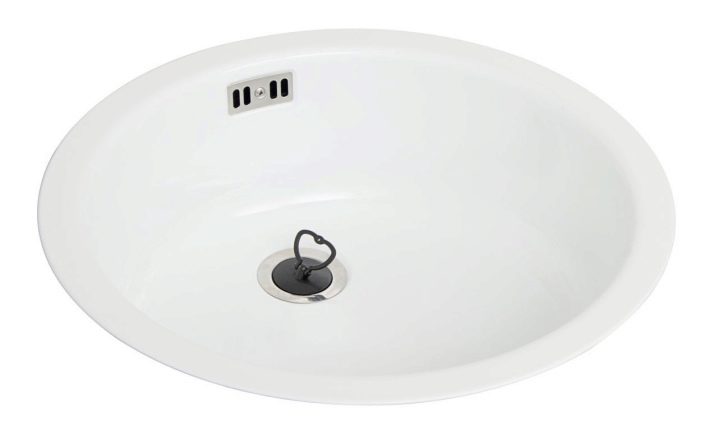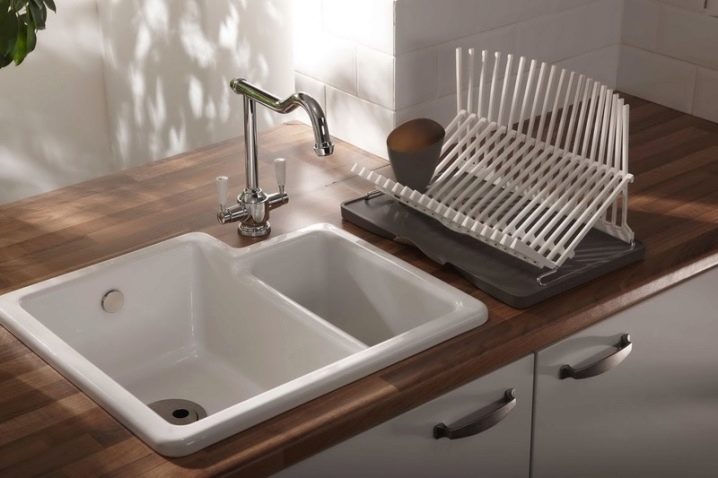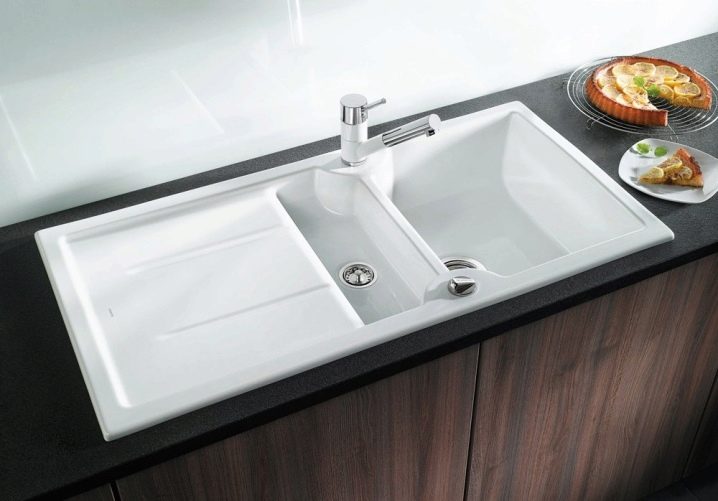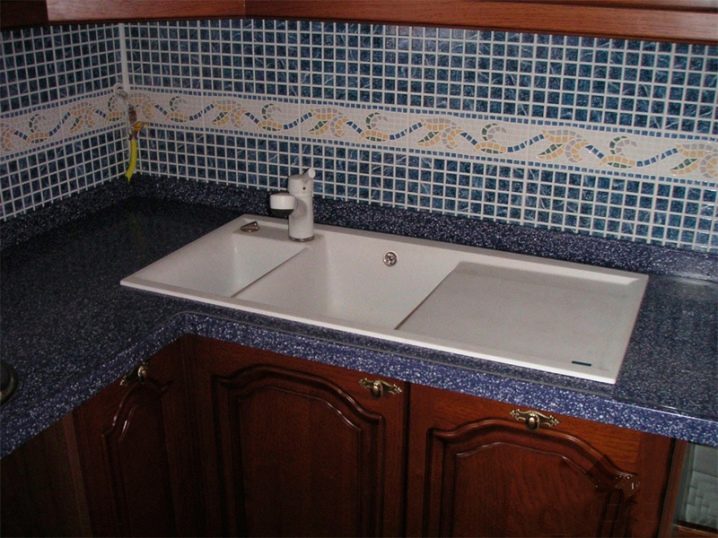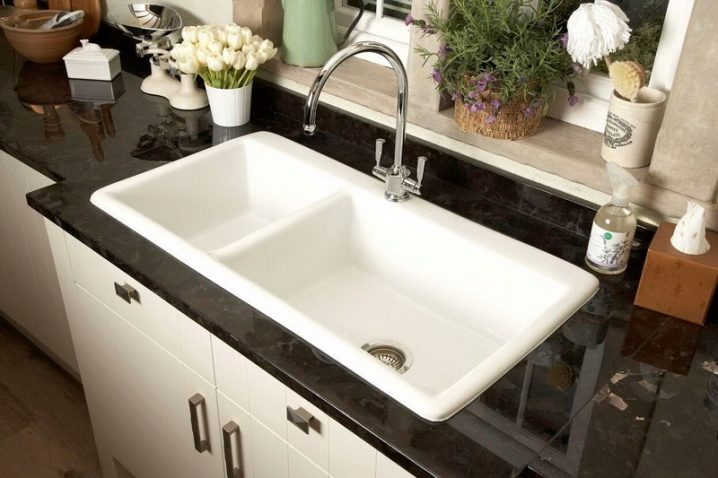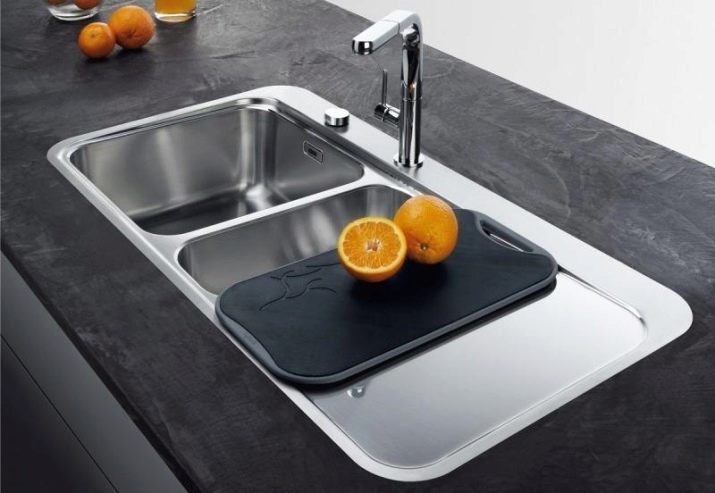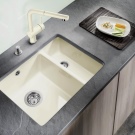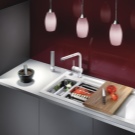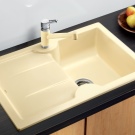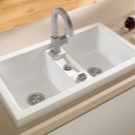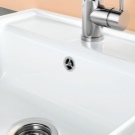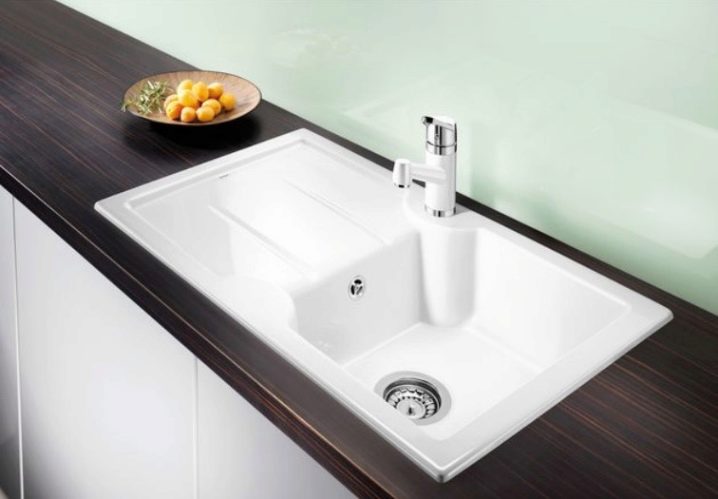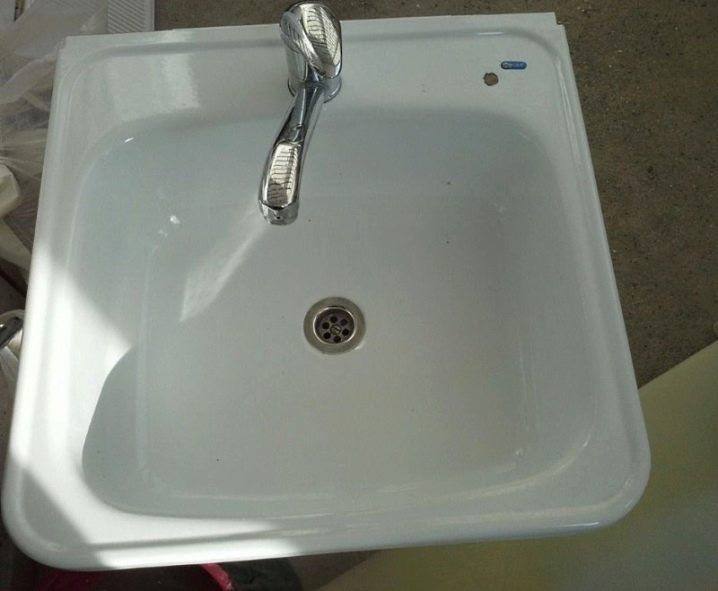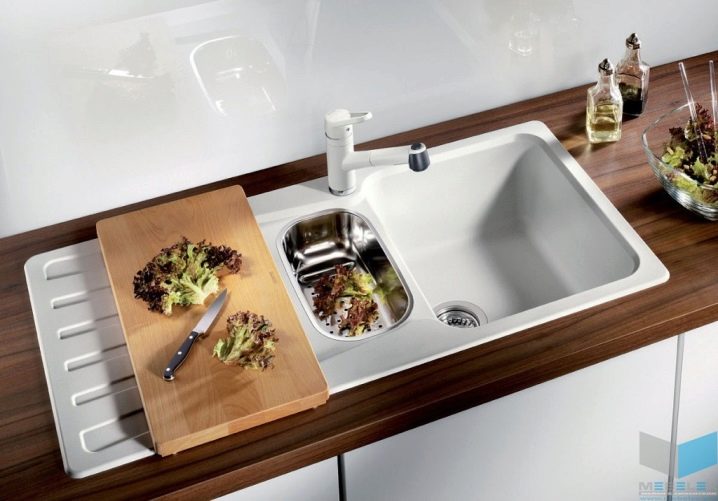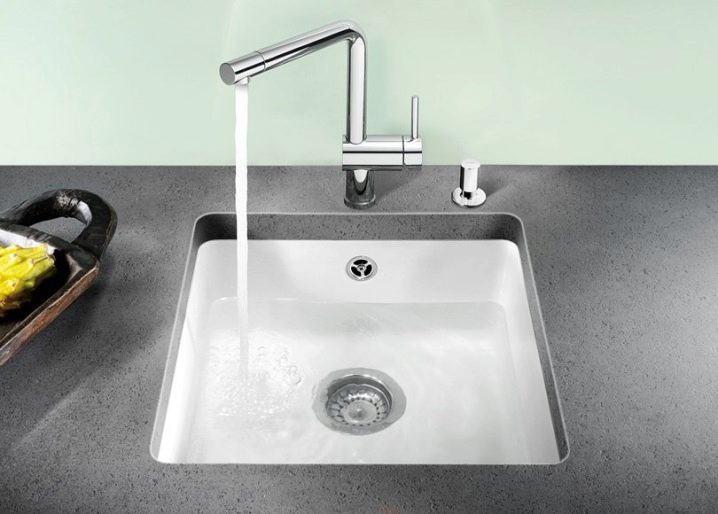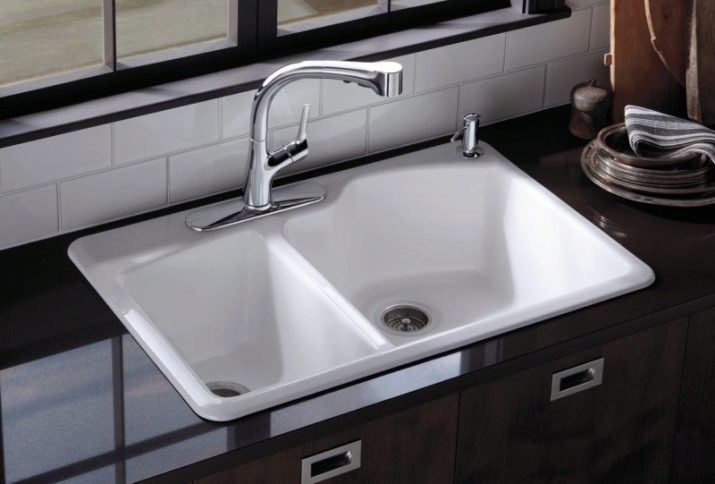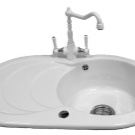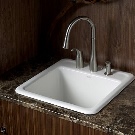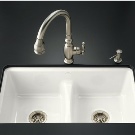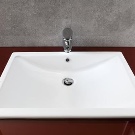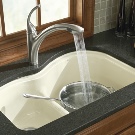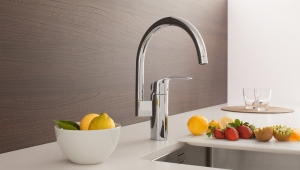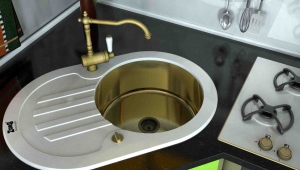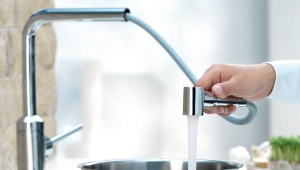Enameled sink for the kitchen
It is hard to imagine a kitchen without a sink, because more than a quarter of the time spent in this room is washing dishes. The modern consumer has no problems with the range of plumbing. In this article we will talk about enameled sinks, unfairly fade into the background to the increasingly popular sinks of granite and stainless steel.
Kinds
Steel
Benefits:
- Such a sink is usually lightweight, which makes installation easier.
- There is a wide variety of enamel colors.
- Large selection of shapes, sizes and designs.
- Install such a sink can almost anyone, without special training.
- No special attachments are required.
Disadvantages:
- Steel sinks make a lot of noise when water falls on them. To get rid of this drawback, you can purchase a sink with special pads that absorb sound.
- They conduct electricity very well, which is unsafe.
Ceramic
Benefits:
- Extremely durable and wear-resistant shell. Ordinary users and professionals point out that this is the best choice for the kitchen. Does not spoil from high temperature and exposure to various chemicals.
Disadvantages:
- Unfortunately, they are fragile and easily split and crack from blows with hard objects.
- Heavy enough that complicates installation
- Look unsightly
Cast iron
Cast-iron kitchen sinks belong to ‘old-style sinks’ and are not very popular now, however, they also have a number of advantages.
- They are durable and reliable.
- Durable, can serve as whole decades, which confirms experience.
- The cast iron surface does not corrode.
- They are perhaps the cheapest of all types of sinks, and this is often the main criterion for selection.
Disadvantages:
- Dropped objects easily leave marks on the enamel.
In general, enameled sinks are as strong as stone and stainless sinks. They have a pleasant gloss and whiteness. Enamel protects against plaque, scale and harmful bacteria. But at the same time enamel is their weak point. It protects against rust, heat and chemical attack, but is easily destroyed by shock.Impacts cause chipping of the enamel, and the surface becomes exposed to corrosion.
Installation Methods
There are two basic installation methods: waybill and mortise. Universal advice: when choosing a way to focus on the kitchen itself. If it consists of standing alone items, then you can install a wall-mounted sink, if the kitchen set is one-piece, then it is mortise. Overhead mounted on the base, and mortise embedded in the worktop.
- Overhead sinks are quite simply installed on a separate cabinet, with a mixer and a siphon pre-installed in it.
- To install the mortise shell on the tabletop with a pencil or marker, mark its shape. Then cut a hole and clean the grooves of debris. A sealant is applied to the cut, and a rubber sealant, which acts as a waterproofing element, is applied on top. Then install the sink itself.
- There is also a method such as mounting on brackets. It is similar to the installation of overhead sinks, but in addition to the space between the table top and the sink, you need to apply a sealant and polish it.
How to choose?
In advance, before going to the store or ordering over the Internet, decide which sink will fit into the kitchen interior.Decide on the color, material, installation method, shape and size. In the store, first of all, pay attention to external defects: scratches, chips, cracks on the enamel. There should not be even the smallest scratches, over time they will turn into impressive chips, so do not even consider such options. Look at the enamel at an angle of 45 degrees: it should be smooth and even, without pimples. Also look at the sink from the other side. Naturally, the same external defects are not allowed there either.
For the rest, be guided by your taste and financial capabilities.
Care
To care for such sinks is simple. Regardless of the material of washing, the approach to maintaining enamel in proper condition is the same. It is best to clean with ordinary sponges, using products that do not damage the surface, with the addition of alkali, using ordinary dishwashing detergents. You can not use products containing acid - they corrode enamel. It is not recommended to use brushes with metal bristles that leave scratches on the surface. Products containing sea salt and abrasives are not allowed.
Sizes and shapes
Sinks can be completely different shapes. The classic are rectangular and round sinks, because they are the most practical and suitable for any furniture and interior. As a rule, round sinks are more capacious than rectangular. Also now the corner sinks from two bowls are popular, in which they often use a combination of shapes, such as round and rectangular, square and oval, and others. In addition to form, depth plays a key role. In shallow sinks it is inconvenient to wash the dishes, water flows easily out of them. At the same time, overly deep bowls force one to stand with a bent back while washing dishes. The optimum bowl depth is 16 - 25 cm.
Analyzing reviews, it can be noted that people still often opt for enameled washers. Many also speak well of the old-style cast iron washers, which were ubiquitous some time ago. People who choose them, note their strength, durability and the fact that they meet the basic requirements for kitchen sink. The main advantage of enameled sinks is low price, and for many consumers it is one of the main selection criteria,therefore, this type of sink will remain relevant for a long time.
